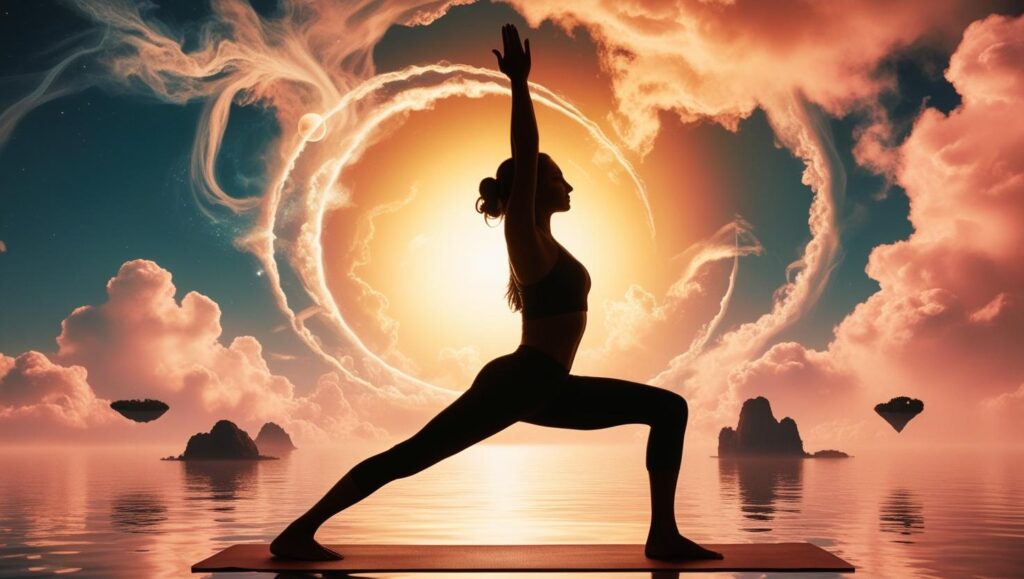
Suryanamaskara, also known as Sun Salutation, is one of the most revered and foundational practices in yoga. It is a sequence of twelve powerful yoga poses that offer a complete body workout. Traditionally performed at sunrise, Suryanamaskara is both a physical exercise and a spiritual ritual that pays homage to the sun, the source of all life on Earth.
In this comprehensive guide, we’ll cover everything you need to know about Suryanamaskara from its origins and benefits to step-by-step instructions, variations, and tips for beginners. Whether you’re a yoga enthusiast or a fitness seeker, this guide will help you harness the power of the sun salutation.
What is Suryanamaskara?
Suryanamaskara is a Sanskrit term made up of two words: Surya, meaning “sun,” and Namaskara, meaning “salutation” or “bowing down.” It is an ancient yogic practice rooted in Indian tradition, performed to express gratitude to the sun.
The practice involves a dynamic series of twelve postures that are synchronized with controlled breathing. Each movement flows into the next, creating a meditative and invigorating flow that enhances both physical and mental well-being.
Health Benefits of Suryanamaskara
Regular practice of Suryanamaskara offers numerous health benefits for the body, mind, and spirit. Here are some of the key advantages:
1. Improves Flexibility and Strength
2. Boosts Cardiovascular Health
3. Aids in Weight Loss
4. Enhances Mental Focus
5. Balances Hormones
6. Improves Digestion
When and How to Practice Suryanamaskara
- Best Time: Early morning, during sunrise, on an empty stomach.
- Recommended Repetitions: Beginners can start with 4-6 rounds, gradually increasing to 12 or more rounds daily.
- Breathing: Inhale during upward and opening poses, exhale during downward and compressing poses.
Step-by-Step Guide to the 12 Poses of Suryanamaskara
1. Pranamasana (Prayer Pose)
- Stand upright with feet together.
- Join palms in front of the chest.
- Focus on your breath and center yourself.
2. Hastauttanasana (Raised Arms Pose)
- Inhale and raise your arms overhead.
- Slightly arch your back and stretch the body upward.
3. Hasta Padasana (Hand to Foot Pose)
- Exhale and bend forward from the hips.
- Place palms beside your feet; try to touch the floor.
4. Ashwa Sanchalanasana (Equestrian Pose)
- Inhale and step your right leg back.
- Look upward, opening the chest.
5. Dandasana (Stick Pose)
- Hold the breath and bring the left leg back.
- Keep the body in a straight line like a plank.
6. Ashtanga Namaskara (Salute with Eight Parts)
- Exhale and lower knees, chest, and chin to the floor.
- Keep hips slightly raised.
7. Bhujangasana (Cobra Pose)
- Inhale and slide forward, lifting the chest.
- Keep elbows slightly bent and shoulders away from ears.
8. Adho Mukha Svanasana (Downward Dog Pose)
- Exhale and lift the hips into an inverted ‘V’.
- Press heels down and extend the spine.
9. Ashwa Sanchalanasana (Equestrian Pose)
- Inhale and bring the right foot forward between the hands.
- Look up and open the chest.
10. Hasta Padasana (Hand to Foot Pose)
- Exhale and bring the left foot forward.
- Fold into a forward bend.
11. Hastauttanasana (Raised Arms Pose)
- Inhale and stretch the arms upward.
- Slightly arch the back.
12. Pranamasana (Prayer Pose).
- Exhale and bring palms together at the heart center.
- Return to the starting position.
Tips for Beginners
- Warm Up: Begin with light stretches or gentle poses to avoid injury.
- Focus on Form: Accuracy in poses is more important than speed.
- Use Props if Needed: Yoga blocks or straps can help with alignment.
- Stay Hydrated: Especially if doing an intense or heated variation.
- Consistency is Key: Practicing daily delivers the best results.
- Consult a Yoga Instructor: Especially if you have health conditions.
Precautions and Contraindications
Avoid or modify Suryanamaskara if you:
- Are pregnant (unless under expert guidance)
- Have back or joint issues
- Suffer from high blood pressure or heart problems
- Recently had surgery or injuries
Always consult with a healthcare provider or certified yoga instructor before beginning a new fitness routine.
Final Thoughts: Why Make Suryanamaskara a Daily Practice?
Incorporating Suryanamaskara into your daily routine offers a holistic blend of strength, flexibility, and mindfulness. It requires no equipment, little space, and can be adapted for all levels of fitness. Whether you want to lose weight, tone your body, improve mental clarity, or connect spiritually, Suryanamaskara is a powerful tool to start your day energized and focused.
All living creatures requires sunlight for good growth, I like this info.
Good